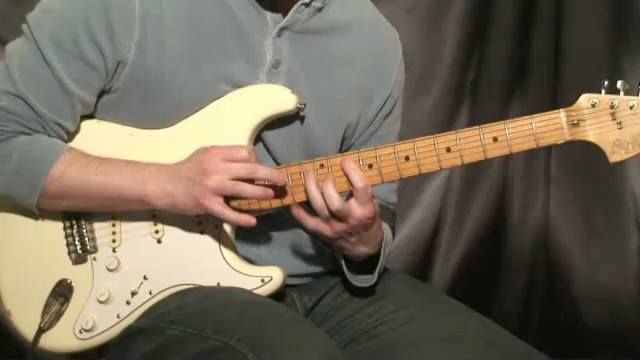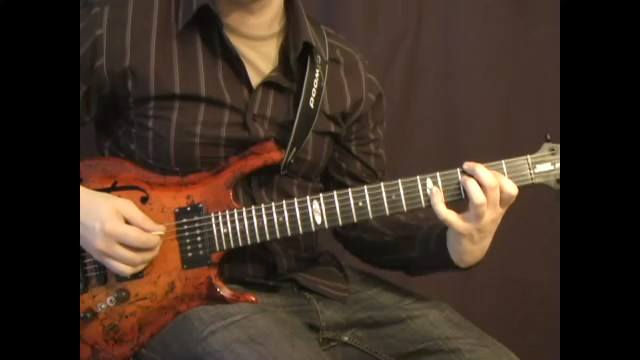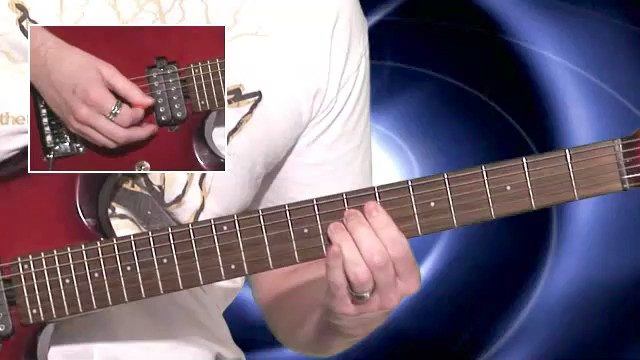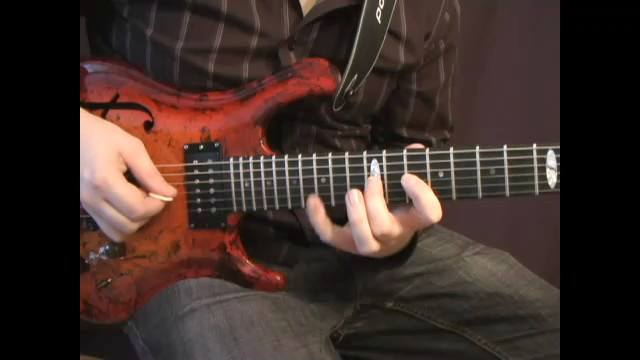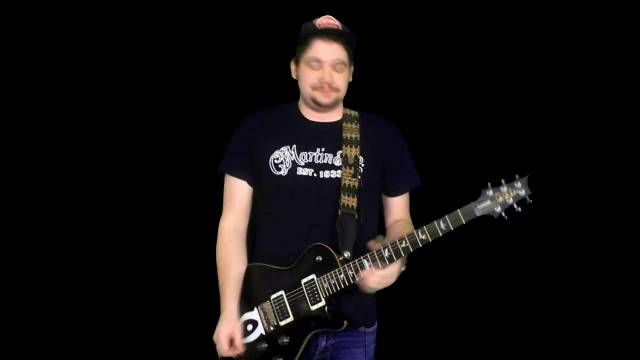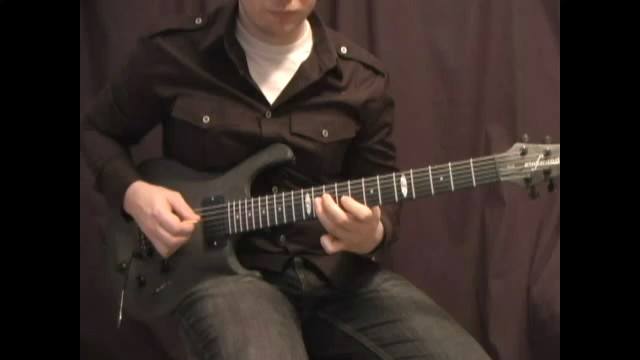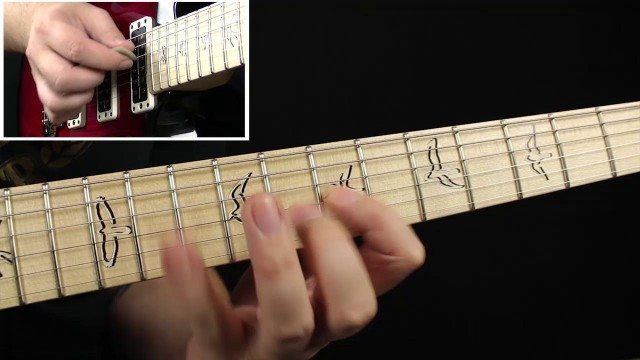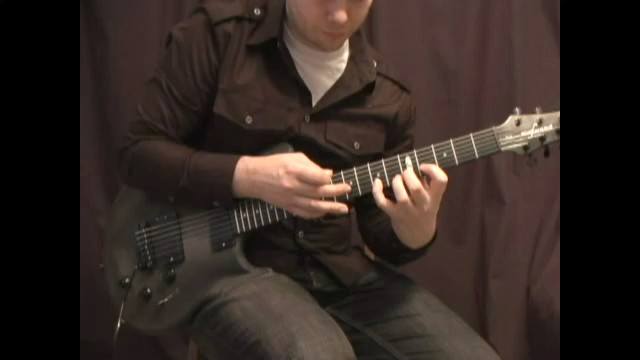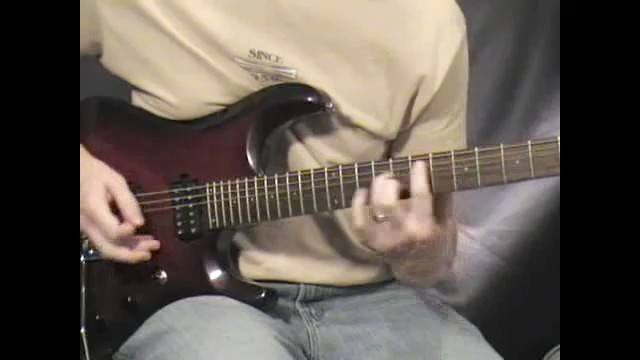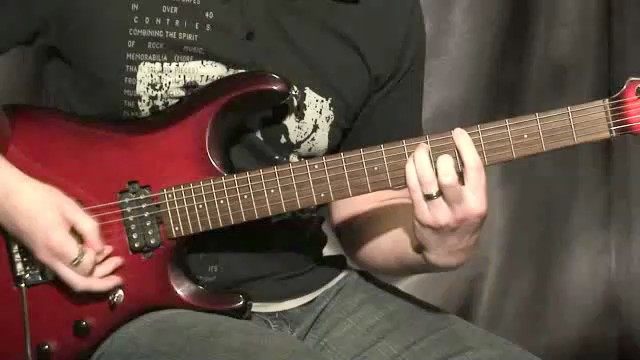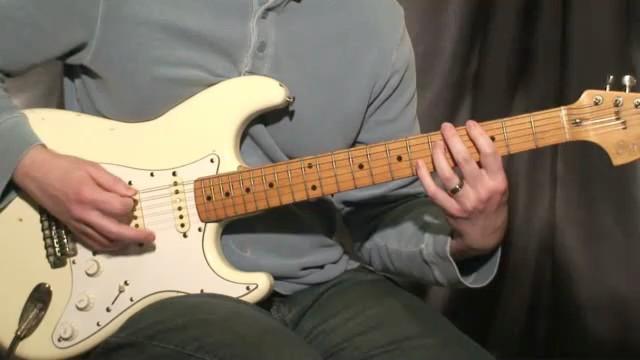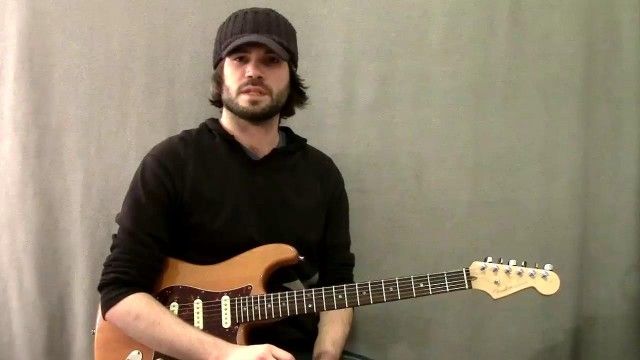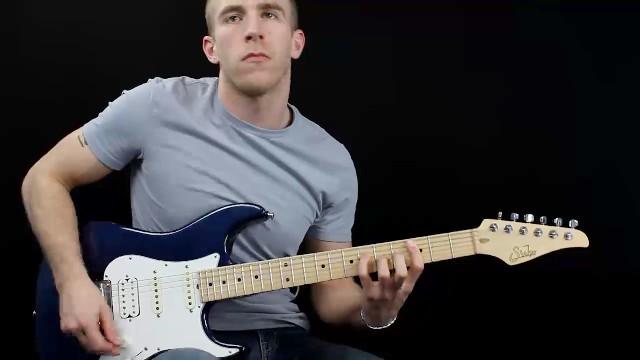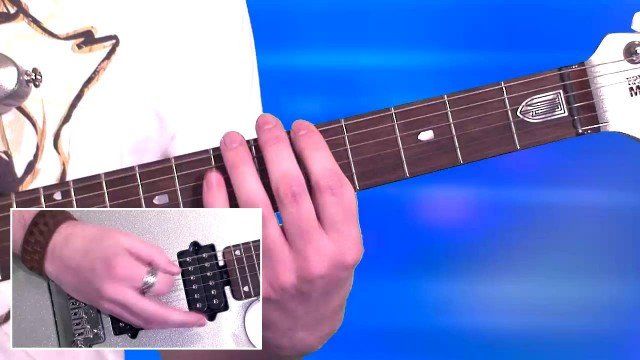Welcome back and give yourself a big pat on the back for getting the time signatures correct! If you did, that is. ;)
The purpose of this tutorial is to give you a gentle push in the direction of combining time signatures, which will hopefully give you some ideas to incorporate into your own song writing and composing skills.
I'm particularly fond of time signature changes which occur in as subtle a way as possible so that they almost go unnoticed. It's a much less 'in your face' approach, which is also very effective, and can really compliment a composition from a rhythmic perspective.
Harmonically, simplicity is the order of the day with this riff and the only noteworthy change is the brief journey to the sub-dominant of E in bar 6 (remember there is a repeat of the first 5 bars). The arpeggiated 9th figures add some colour to the riff too.
Our focus, obviously, lies in the rhythm of the riff. We have a time signature of 7/4 for the first three bars of the riff followed by the change to 4/4 for 2 bars. it may be beneficial to view the last two bars as one whole bar of 7/4 but with an extra crotchet beat added on at the end, although you can approach that as you wish. Notice how the use of the syncopated rhythmic figure of 2 quavers followed by a quaver rest adds to the ambiguity of the rhythm by effectively bouncing over the strong beats.
OK, now we've completed our work here, head on over to the backing track so you can practice to your hearts content!












